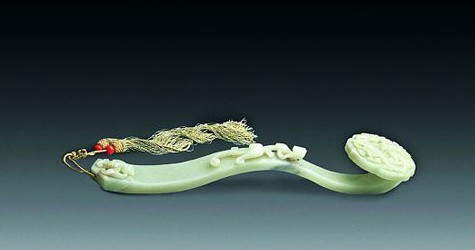
In China, there have been numbers of "Auspicious Pattern" that is popular in folk decorative arts for thousand years and has played an important role in Chinese traditional art treasure-house. The ruyi scepter, with its unique style and artistic language of distinctive national features, is one of the auspicious items that enjoys great popularity in folk culture and has been widely used in engraving, brocade, painting, printing and so on.
Ruyi (literally meaning “as you wishes”), is a wish-granting wand with the shape of flat “S” and a head like the sacred lingzhi (“fungus of immortality”, a mythological mushroom that was said to give eternal life.). It may be made of any of a wide range of valuable materials: gold, jade, crystal, agate, coral, agolloch eaglewood and bamboo. The workmanship is often quite meticulous: it is carved with patterns in incision, low-relief or openwork and sometimes inlaid with silver, gold and gems. Ruyi is decorated with a number of symbols including castanets, gourd, fan and peach. The designs may be simple or very elaborate but invariably convey messages of good wishes, such as "pine and crane" (standing for vigorous old age), "immortals wishing you longevity", "phoenix and peony" (standing for wealth, happiness and prosperity), and the like.
Related News
Photos
More>>history
Traditions
- Chinese Regain Power- Ming Dynasty
- Reconstruction Project of Changsha Municipal Museum to Be Completed This June
- The President Liu Xincheng s Congratulations to Professor Ren Dong on His Great
- Seven SCUT alumni honored Model Workers of 2010
- SCUT commemorates the 100th birthday of Prof. FENG Bingquan
arts
- 7 level-1 discipline doctoral degree programs and 6 level-1 discipline master
- Counselor of the President of the University of Nantes, Prof. Yves THOMAS
- Professor Yew-Kwang Ng Appointed Honorary Professor of Jinan University
- Professor Yew-Kwang Ng Appointed Honorary Professor of Jinan University
- 6 USTC Alumni Newly Elected IEEE Fellow 2011





